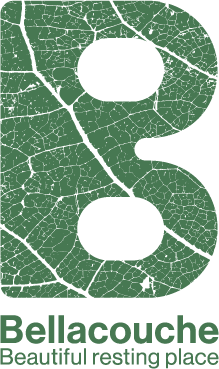Grazing animals versus industrial livestock
Most articles and books about food and agriculture do not link to textiles, which in my opinion should be part of this discussion. So I am including it here, with an emphasis on wool, hemp and flax, which are the three fibres we have a long history of growing and processing in the UK and which I feel should be part of our future. Of the three, it is only wool that can still be grown and commercially processed within our shores.
Humans have an impact on the environment whatever we choose, and given the devastating effect we are currently having on the environment, it is supremely important that each and every one of us make the choices with the least affect, and to do that we need information and education. It is not a simple question and there are no simple answers. It is fortunate that humans are omnivorous, as it means we can thrive on a huge variety of foods and therefore, with education and planning, have the capacity to source the food and textiles that has the least impact on, and could even enhance, the environment.
Differentiating between grass fed animals and grain/soya fed intensively farmed animals has been sadly lacking in the debate about food.
Before humans became agrarian, rather than hunter/gatherer, there would have been vast numbers of grazing animals to hunt, living in balance with preying animals. Their dung enriching the soil, and unhindered by fences and hedges they would move over the landscape quite rapidly, which meant that the herbage regenerated quickly, the dung absorbed in the earth, and the ground would not be compacted. The animals would benefit from the shelter of trees and self-medicate by a diverse herbage, including trees, bushes and scrub. There was no methane emitting slurry to deal with. No mono-crops to grow in far-off deforested regions of the world. No shipping required to bring nourishment to livestock. An increasing number of farmers in the UK and elsewhere are beginning to question the mono-crop intensive farming paradigm and are returning to more planned grazing and regenerative systems. They are questioning the bank loans and debts they have been coerced into, to buy expensive and largely inappropriate materials and technology.
Roaming or field grazing animals that are carefully managed outside and year round, are actually keeping carbon in the ground, especially if they are managed without imported feed supplements, but with herb rich leys. Changing agricultural practices takes time, planning, knowledge and willingness. As consumers, we all need to take part in this ongoing discussion, so below, I set out some basic questions to consider.
1. Insects and habitat
Do you know the source of all the proteins you eat, plus the displacement of that source’s local ecology? For instance, 95% of almonds consumed in the UK come from California. Growing almonds (or any other food) as a mono crop has necessitated high levels of insecticide use, which has wiped out local insect populations. To ensure pollination beekeepers are employed to transport thousands of hives of bees annually by road from Canada.
2. Soil erosion
Replacing (local) animal livestock with plant mono crops – soya, wheat, maize, palm oil and pulses – increases carbon emission through soil disturbance and also is the cause of a catastrophic loss of soil through erosion, which in turn is affecting the natural balances in the sea, and adding to the loss of marine life. Soil health should be at the top of the list of priorities. Small, integrated farms produce more food per acre than large industrial farms whilst also keeping a wider diversity in the local ecology.
3. Marine pollution
What is the full cost of wearing synthetically manufactured fibres? Polyester and other synthetics are made from oil (fossil fuel). The high levels of chemicals and energy used to transform them into fibre are not sustainable. Added to this, every time a synthetic garment is washed, small microfibres leach out into our waterways and are now found to be polluting the seas and killing marine life. They do not biologically break down, unlike natural fibres.
If animal farming is replaced by the farming of more soya, wheat, maize, palm oil and other plant monocrops, how can we prevent the mass destruction of the local environments to make space for this?
Livestock has a huge part to play in providing us with a very sustainable source of protein and fibre, especially sheep. However, I cannot stress enough how important it is to manage them in a sustainable grazing system, with a mindful knowledge of the impact on soil and wildlife. We need to reduce our consumption of meat, demand grass fed animals, campaign for a return to local, humane slaughtering by highly trained and skilled employees, limiting or banning the cruel practices of transportation of live animals on the hoof.
This whole subject is incredibly complex, and there is no single answer to it. There is confusion about sustainability, and there is a backlash against the many flaws in livestock farming. The current conventional system is not sustainable and there is some cruelty. But we need to encourage good farming practice by buying it, and especially supporting smaller, organic farms, localising our consumption and checking provenance.
Further information: https://sustainablefoodtrust.org
